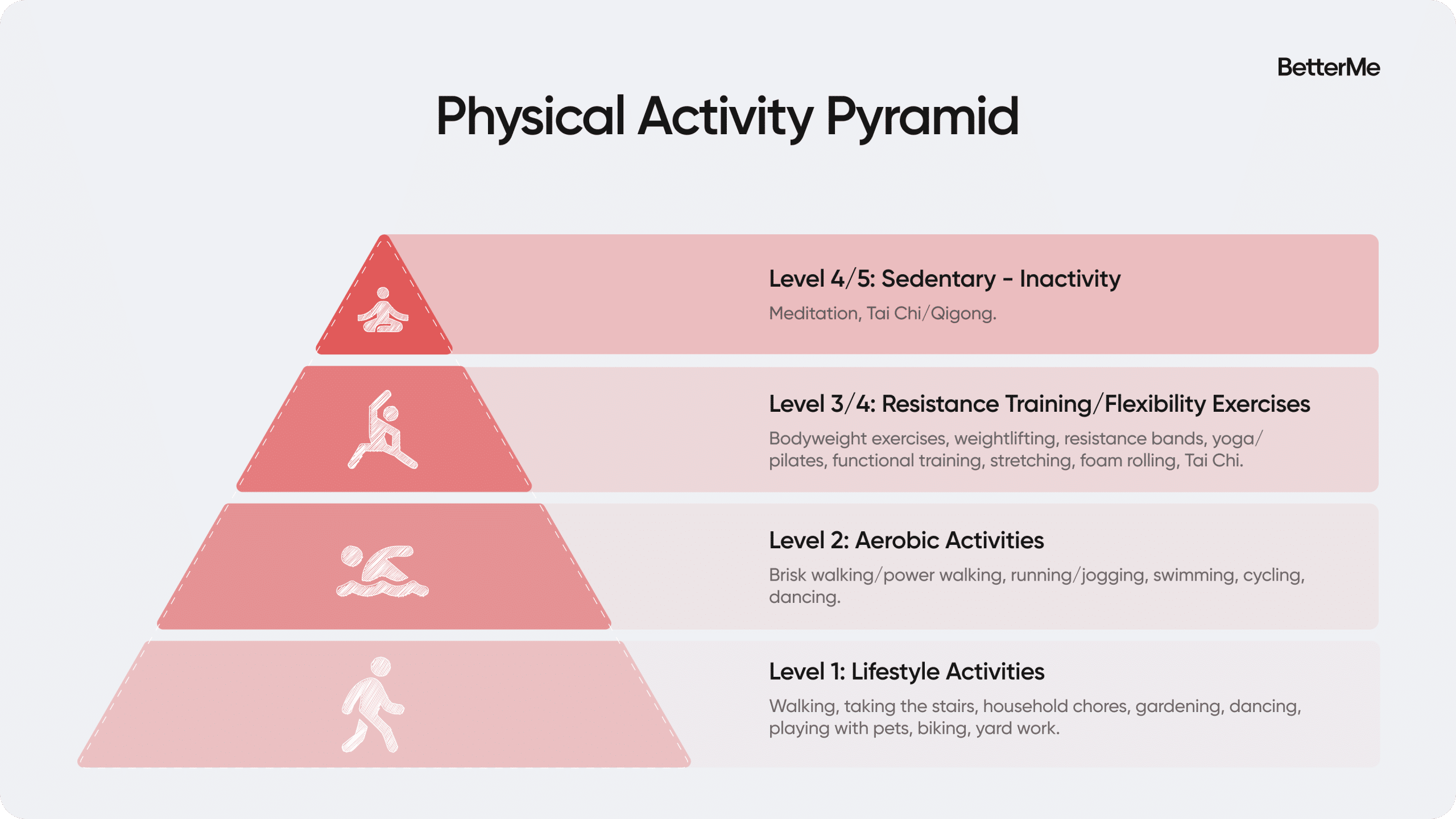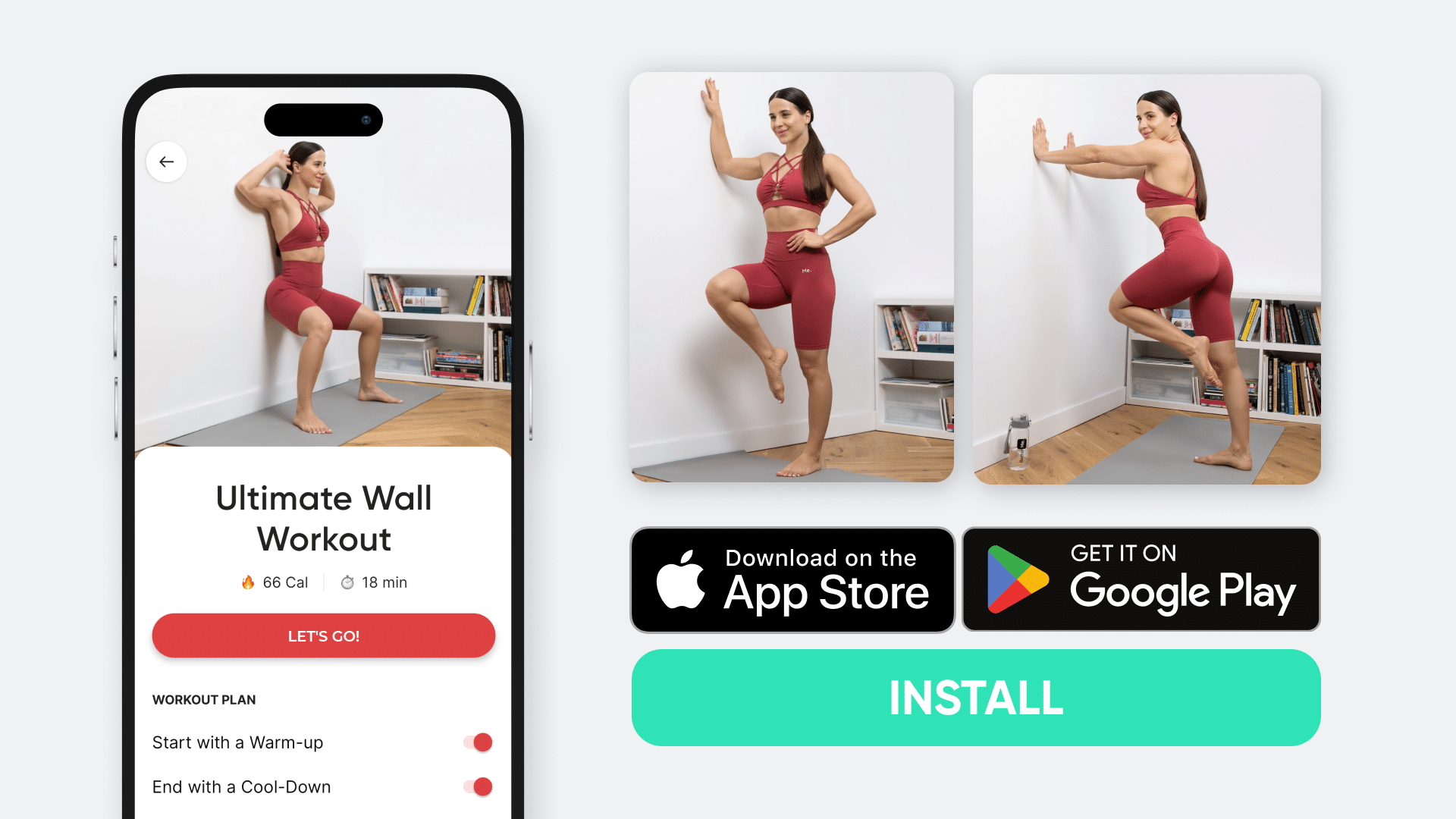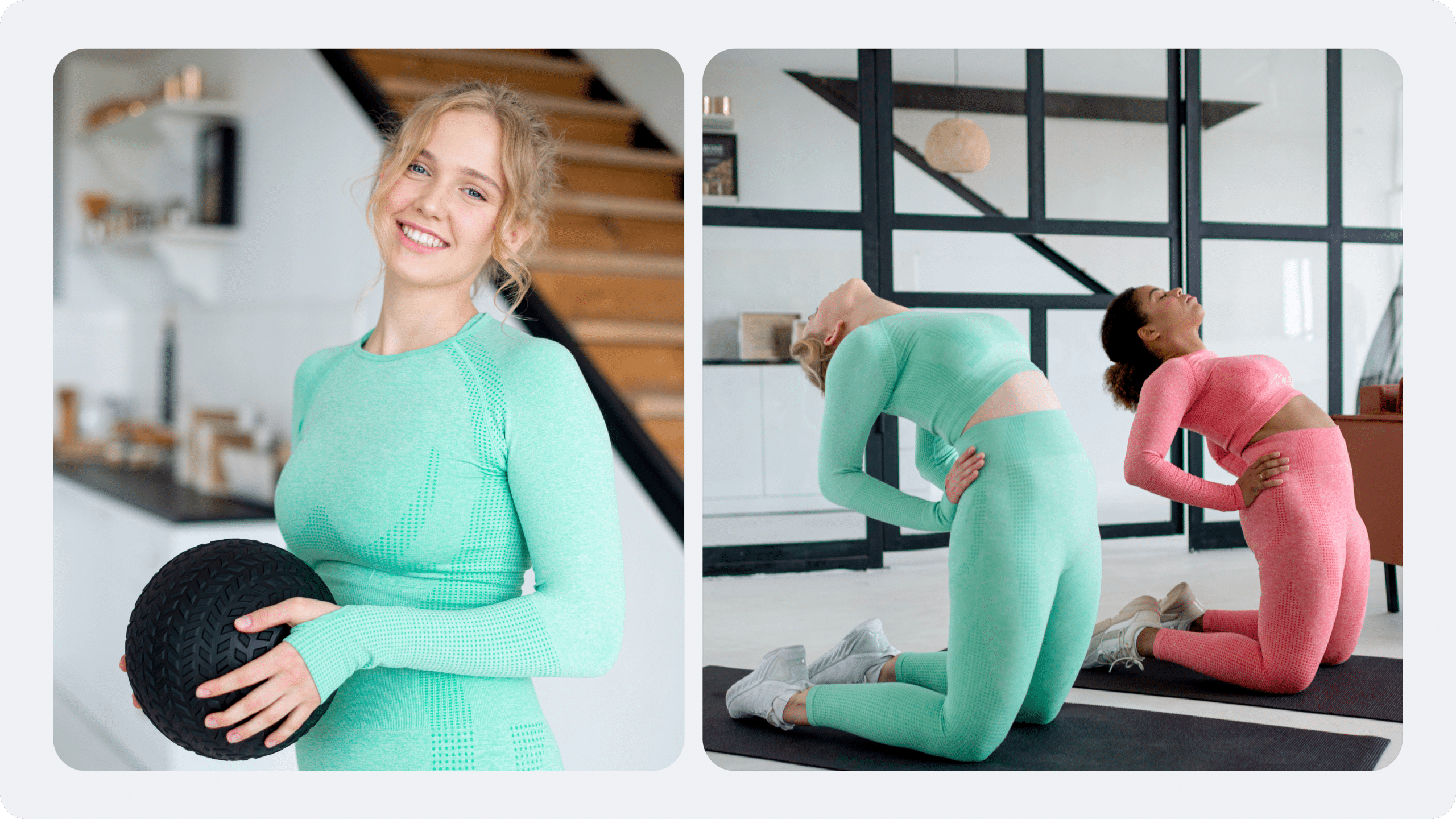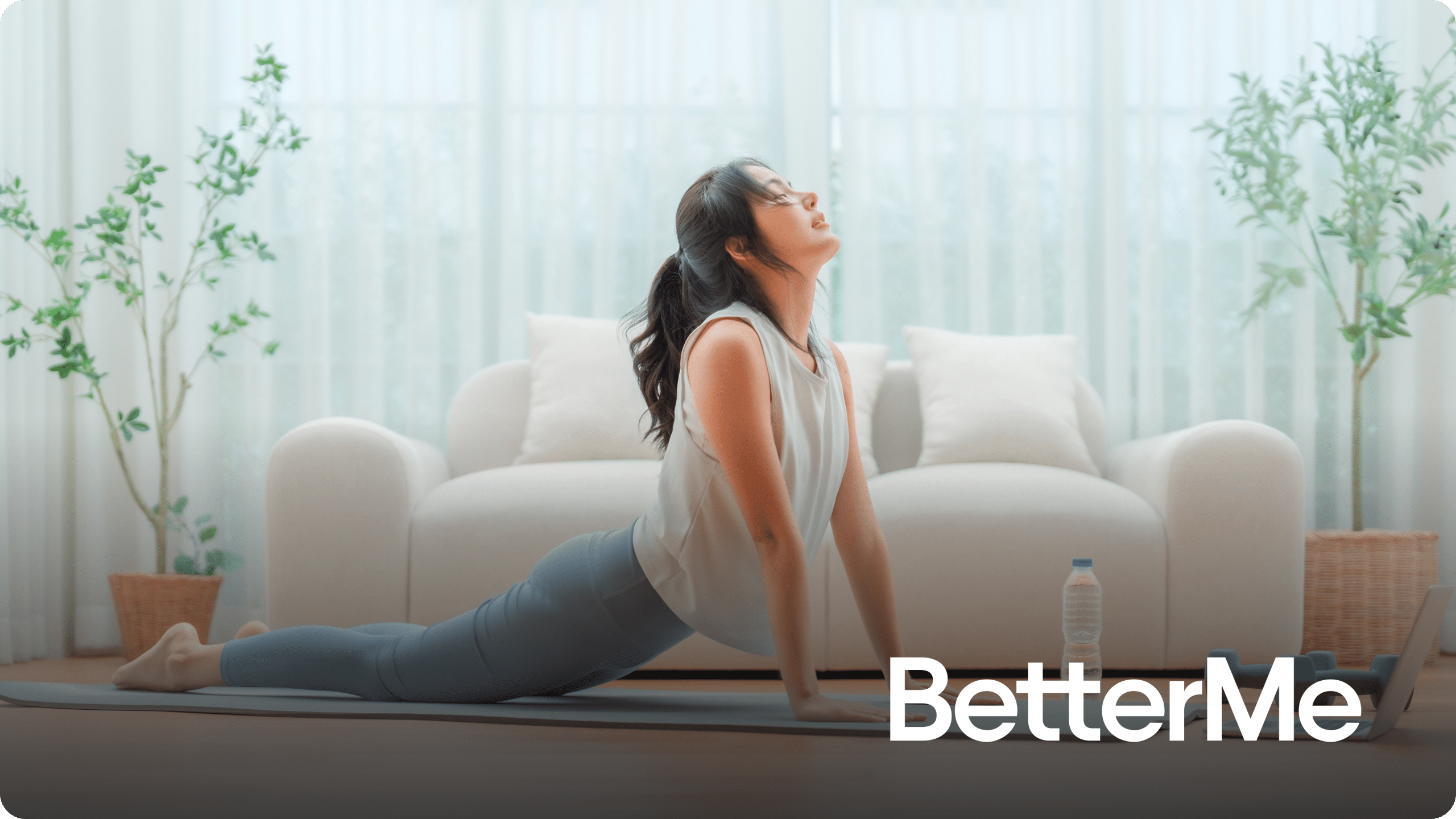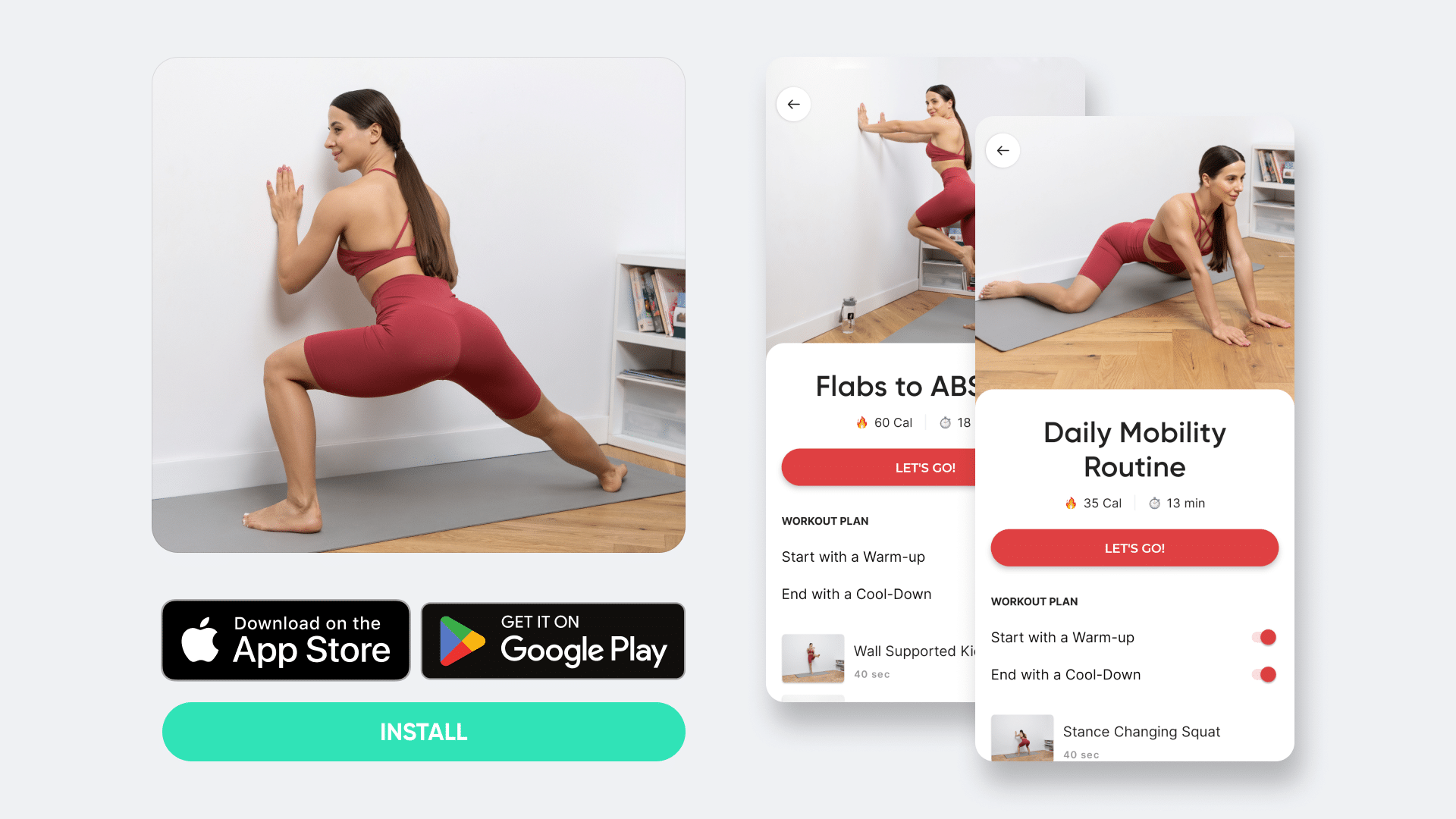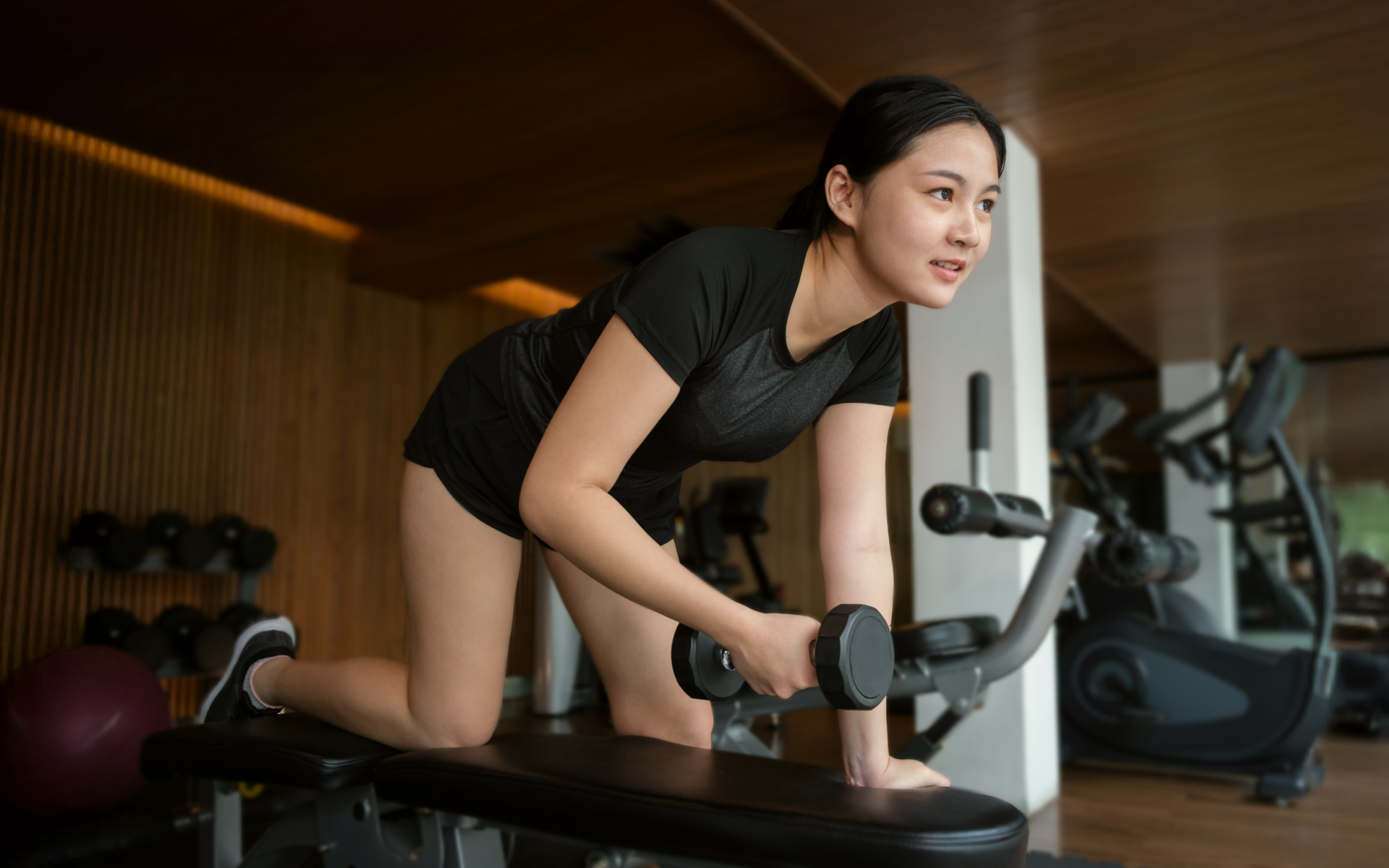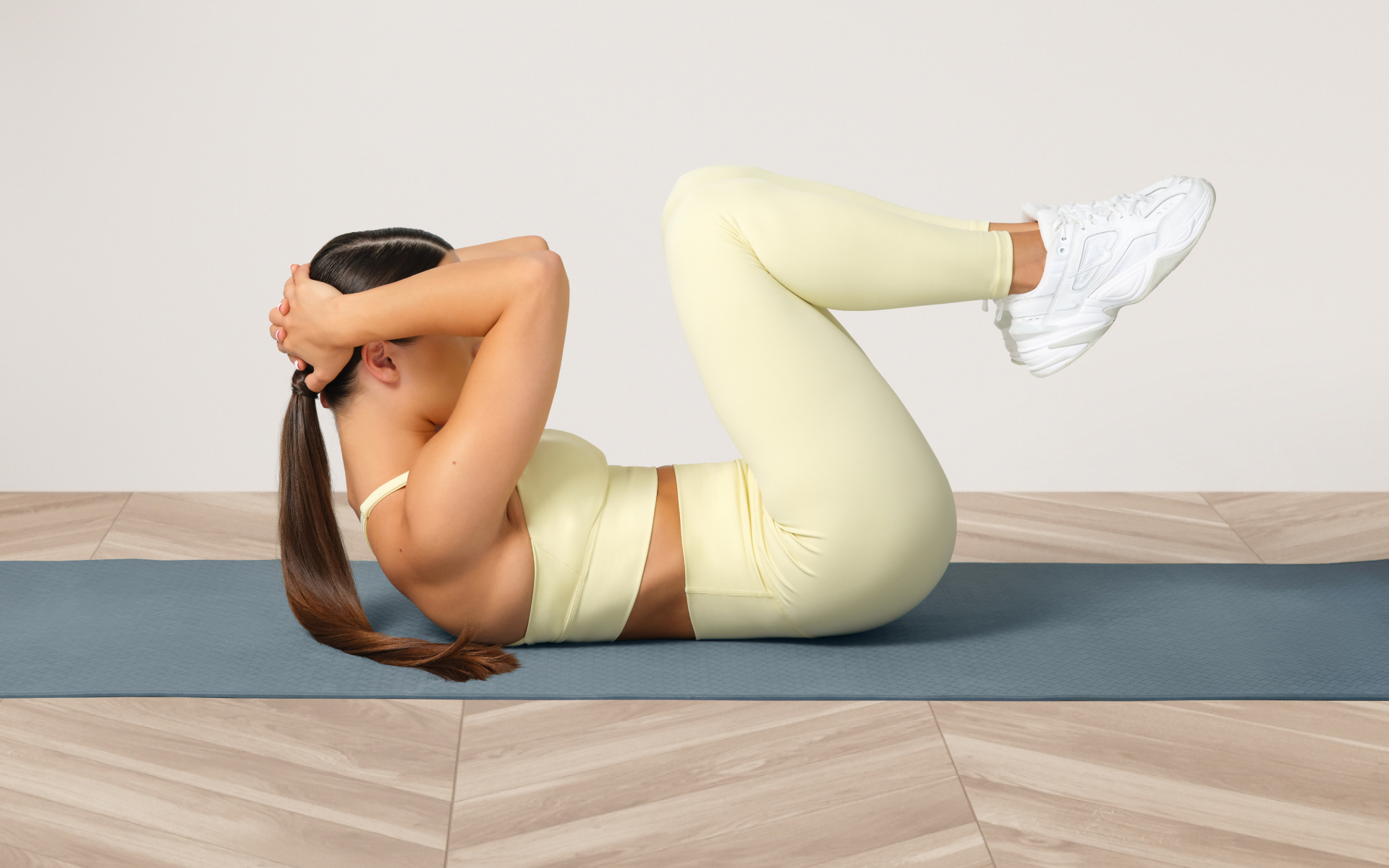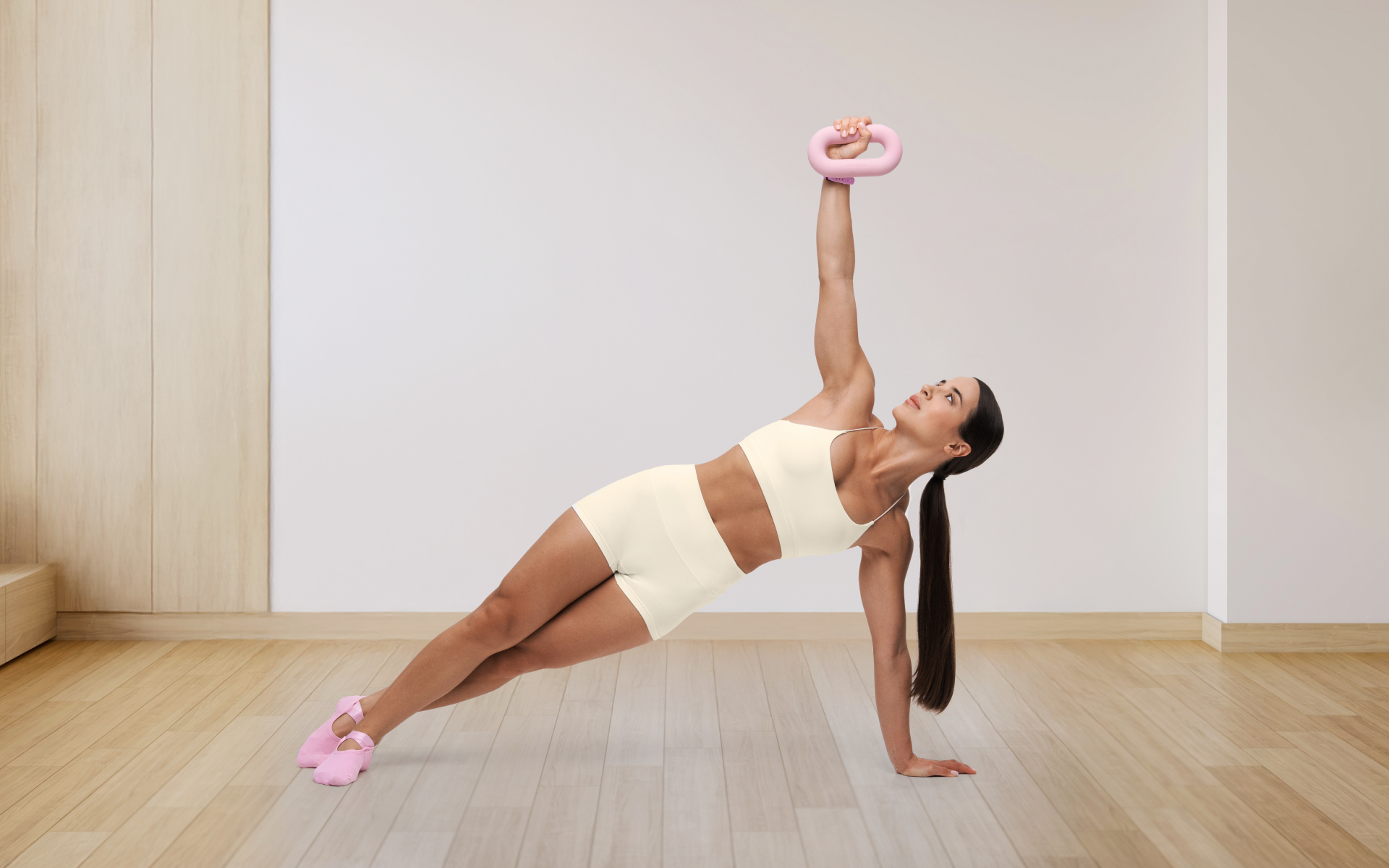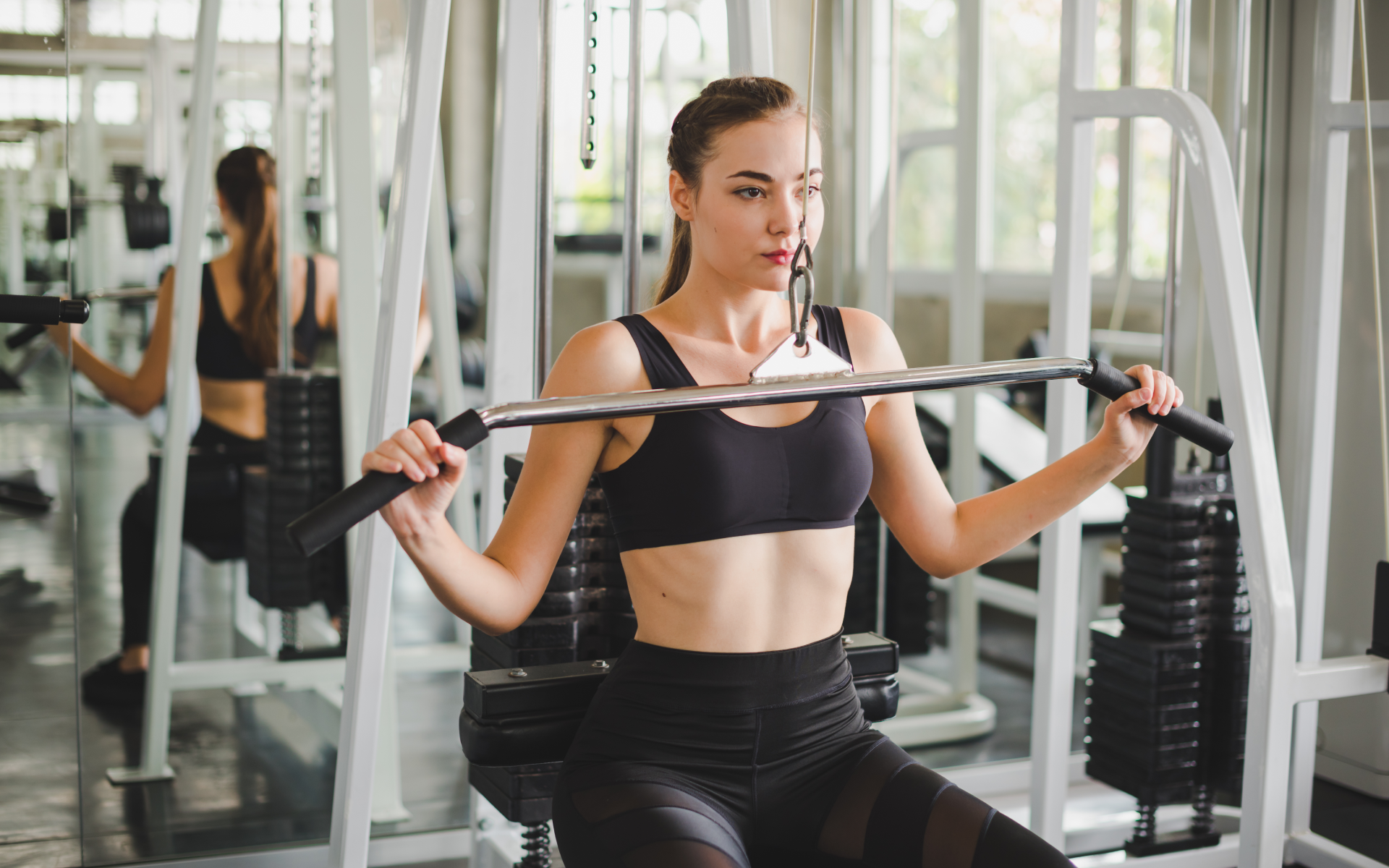According to the Centers for Disease Control and Prevention (CDC), physical activity is essential for maintaining good health. Engaging in regular physical activity can help reduce the risk of chronic conditions such as heart disease, stroke, type 2 diabetes, and some cancers. It also helps improve mental health, bone and muscle strength, and overall quality of life (1).
What Is the Physical Activity Pyramid?
The Physical Activity Pyramid is a graphical representation of the types and amount of physical activity recommended to promote overall health and well-being. It was developed by researchers at the University of Missouri to help people understand and incorporate different levels of physical activity into their daily lives (2). The format/design is based on the historical USDA food guide pyramid.
Why Is the Physical Activity Pyramid Important?
Think of the Physical Activity Pyramid as a roadmap for incorporating physical activity into your daily routine. It’s important because it can help you meet your fitness goals by providing a structured and gradual approach to increasing physical activity. By following the pyramid, you can steadily adjust the intensity and duration of your activities, which makes it easier to reach your fitness goals. The Pyramid also encourages engagement in a variety of activities at different levels of intensity, which helps promote overall fitness and a reduction in the risk of chronic conditions (2).
Use the Pyramid to help you:
- Identify the different types and intensities of physical activity
- Plan and structure your physical activity routine
- Track your progress and make adjustments as needed
- Incorporate variety to keep you motivated and to prevent boredom as well as find what works best for you
- Achieve the recommended amount of physical activity for optimal health
- Focus on all aspects of physical fitness – cardio, strength, flexibility, balance, and mind-body connection
- Take a well-rounded and balanced approach to physical activity
Additionally, there are several potential health benefits, including (19):
- Improved cardiovascular health and a reduced risk of chronic diseases such as obesity, type 2 diabetes, and cardiovascular disease
- Increased strength and muscle endurance
- Improved flexibility, joint range of motion, and balance
- Better mental health and reduced stress levels
- Improved overall well-being and quality of life
What Are the 4 Levels of The Physical Activity Pyramid?
The Physical Activity Pyramid consists of four levels, each of which represents a different type and intensity of physical activity.
Some versions of the pyramid also include a fifth level for flexibility activities, but this isn’t included in the original edition. However, physical activities that help increase and maintain flexibility, as well as balance, are important to continuing mobility as we age and to the prevention of falls and injuries.
And don’t despair if there are certain activities that don’t work for you. There are many options, and every little bit counts. Doing something IS better than doing nothing!
(As always, before you engage in physical activity, it’s important to check with your healthcare provider to determine the type and intensity levels that are safe for you and your particular situation, particularly if you’ve been sedentary on more days than not, have underlying medical conditions, or have a history of injuries.)
Keep reading to learn about each level of the Physical Activity Pyramid and how you can use it to improve your health.
Level 1: Lifestyle Activities
The base of the pyramid represents lifestyle activities, which are everyday physical movements that can more easily be incorporated into your routine.
These activities are typically low to moderate in intensity and include things you may already be doing without realizing their health benefits. The rationale behind emphasizing lifestyle activities at the base of the pyramid is simple: they’re accessible, sustainable, and effective for long-term health maintenance.
Research has shown that consistent physical activity, even at lower intensity levels, can significantly improve cardiovascular fitness, help maintain a healthy weight, and reduce the risk of chronic conditions (3).
The idea is to encourage continuous movement throughout the day rather than being sedentary. Think about it this way: small actions performed consistently can add up to big health benefits over time. This progressive accumulation of activity promotes energy balance, enhances metabolic health, and improves mental well-being.
For example, a longitudinal study showed that those who indulged in physical activity (PA) saw the bettering of health-promoting behaviors, including fruit and vegetable intake, time spent in sedentary activity (eg, in front of a screen), alcohol intake, sleep, stress, and overall health scores. (4).
This holistic approach is backed by science and is better able to accommodate busy schedules, which makes it easier for people to stay active without having to commit only to structured exercise regimens.
Here are examples of lifestyle activities for you to consider including in your day-to-day life:
- Walking – Take a walk during your lunch break or after dinner.
- Taking the Stairs – Opt for the stairs instead of the elevator whenever possible.
- Household Chores – Engage in activities such as cleaning, mopping, or vacuuming.
- Gardening – Spend time planting flowers or vegetables and pulling weeds.
- Dancing – Enjoy a dance session in your living room, whether alone or with family members.
- Playing with Pets – Take your dog for a walk or play fetch in your backyard.
- Biking – Use a bicycle for running errands or commuting to nearby places when safe bike paths are available.
- Yard Work – Activities such as raking leaves or mowing the lawn are great for staying active.
Incorporating these activities into your daily routine is manageable for most people and enjoyable if you select activities you like to do. Remember the goal is to keep your body in motion and make physical activity a natural part of your everyday life.
Level 2: Aerobic Activities
The second level of the pyramid represents aerobic activities, which are also known as cardio exercises. They involve using large muscle groups to increase your heart rate for an extended period.
According to the Physical Activity Guidelines for Americans, adults should aim for at least 150 minutes of moderate-intensity aerobic activity or 75 minutes of vigorous-intensity aerobic activity per week (5). Achieving that goal could include activities such as:
- Brisk Walking/Power Walking – Increase your walking speed to get your heart pumping.
- Running/Jogging – Go for a run around your neighborhood or on a treadmill.
- Swimming – Do vigorous laps in the pool or sign up for aquatic aerobics classes.
- Cycling – Venture out on a bike ride or join indoor cycling classes.
- Dancing – Join a dance fitness class such as Zumba or try out different dance styles.
Aerobic activities offer numerous benefits, including improved cardiovascular health, increased endurance and strength, weight management, and stress reduction (6).
You don’t need to be an Olympian to reap the health and well-being benefits which physical activity brings. And different people have different “exercise personalities”:
- Intense and Fast: This personality type wants to get things over quickly and go all out when moving, and research shows this approach can be effective. For example, a study published in the World Journal of Cardiology found interval training (alternating between short bursts of high-intensity exercise and rest) to improve overall fitness levels and cardiac function in individuals with heart disease (7).
- Steady and Even: For those with this personality type (or for those with physical limitations), low-intensity steady-state (LISS) cardio can be a great alternative approach. LISS involves maintaining a constant, moderate level of exercise for an extended duration, such as walking or cycling at a steady pace.
Level 3/4: Resistance Training/Flexibility Exercises
Resistance Training
The third level of the pyramid represents resistance training, which is also known as strength training. This type of activity helps build and maintain muscle strength and endurance by using external weight or your body weight as resistance.
Research has shown that incorporating resistance training into your routine can improve bone density, increase metabolism, and reduce the risk of injury by improving balance and coordination. It’s also a helpful component of an overall weight loss program and improves overall physical function (8).
Strength training is particularly beneficial for older adults, as it can help prevent age-related muscle loss and improve balance and coordination (9). It also plays a vital role in maintaining bone health (10), which is particularly important for certain groups (e.g., white and Asian women, those who experience premature or early menopause, smokers, and heavy alcohol users) (11, 12). But don’t wait until a certain age to get started. Although we usually don’t perceive it, we begin to lose muscle mass in our 30s (13) and balance in our 40s and 50s (14)!
Examples of resistance training activities include:
- Bodyweight Exercises – squats, push-ups, planks, lunges, and other body weight exercises
- Weightlifting – free weights or weight machines to target specific muscle groups
- Resistance Bands – resistance bands for a full-body workout that’s easy on the joints
- Yoga/Pilates – strength-building poses/postures
- Functional Training – mimic real-life movement patterns to improve overall strength and function
Ideally, resistance training should be performed at least two days a week, with a focus on all the major muscle groups.
A common myth, particularly for women, surrounding resistance training is that it will make you bulky and unnaturally muscular. However, bulking up to a level where you build the type of muscle mass seen with bodybuilders requires an intense training regimen that far exceeds recommended strength exercises for the general population. And most women don’t have the level of testosterone which aids men in increasing muscle mass to a much greater degree (15).
Flexibility Exercise
In some versions of the Pyramid, there is an additional level that includes flexibility activities, which focus on improving joint range of motion, muscle elasticity, and overall mobility.
Flexibility exercises are often overlooked but play an essential role in preventing injuries during physical activity and daily tasks such as bending, reaching, and lifting as well as movements like those needed for swimming, racquet sports, and golf. Being flexible also helps reduce muscle soreness after workouts and improves posture (16).
Examples of flexibility activities include:
- Stretching – all major muscle groups, holding each stretch for 10-30 seconds
- Yoga/Pilates – strength-building poses muscle lengthening movements which focus on flexibility and mobility
- Foam Rolling – self-massage with a foam roller to release tension in the muscles and improve flexibility
- Tai Chi – a low-intensity form of martial arts that focuses on balance, coordination, and flexibility; although often associated with older adults, tai chi is great for all ages!
Plan on doing flexibility exercises at least two days a week, rotating through all the major muscle groups. Incorporating stretching and mobility work into your warm-up routine is also recommended before you perform any physical activity.
Level 4/5: Sedentary – Inactivity
The final level of the pyramid represents sedentary behavior or inactivity. This includes activities such as sitting for long periods, watching TV, using electronic devices, and other forms of leisure time spent without physical movement.
According to a study published in the American Journal of Preventive Medicine, prolonged sitting is associated with an increased risk of chronic conditions like obesity, type 2 diabetes, cardiovascular disease, and even premature mortality (17). And a meta-analysis reported by the Mayo Clinic found the risk of dying prematurely for people who sat for more than eight hours a day with no physical activity was equivalent to that found in those who were obese or smoked (18).
Therefore, these activities should be limited as much as possible, and individuals should aim to incorporate more physical activity into their daily routines. Make small changes, such as taking short breaks from sitting every hour, using a standing desk, or incorporating physical activity into your leisure time (e.g., going for a walk instead of watching TV).
One way to improve the top level of the pyramid is to engage in mind-body activities, which are focused on the connection between the mind and body. These activities may not involve as much physical exertion, but they can provide numerous benefits such as stress reduction, improved mental health, and overall well-being.
Examples of mind-body activities include:
- Meditation – Focus on the present moment and promote relaxation and mindfulness (16) while taking a walk
- Tai Chi/Qigong – Low-intensity martial arts that focus on balance, coordination, and breathing techniques (17)
Incorporating these activities into your routine can help reduce stress, improve mental health and well-being, and promote a more balanced lifestyle (18). They can also be great options for individuals with physical limitations or injuries.
How Do I Determine My Activity Level?
One use for the Physical Activity Pyramid is to determine your current activity level and make changes accordingly. To do this, you can reflect on your daily routine and estimate how much time you spend in each of the pyramid levels.
- For 2 weeks, track your physical activity using a journal or fitness tracker. This will give you an accurate assessment of how much time you spend in each level and help identify areas where you can make improvements.
- Once you have determined your activity level, you can then set goals to increase your physical activity gradually. For instance, if you are currently at the second level, you can aim to incorporate more vigorous physical activities or increase the duration and frequency of your moderate-intensity exercises.
How Much Time Should I Spend at Each Level?
To adhere to the recommended physical activity guidelines, below are some suggestions for the time spent in each level. However, remember some activity is better than no activity. The goal is not perfection but to move your body safely and sufficiently enough over time to improve your health, well-being, and quality of life.
| Level | Time Each Week |
|---|---|
| 1 | at least 30 minutes most days of the week |
| 2 | 20-30 minutes most days of the week |
| 3 (resistance training) and 4 (flexibility) | at least two days a week, for at least 45 minutes at least two days a week, for at least 20 minutes |
| 5 | Limit the amount of time spent at this level. |
FAQs
Where Does Heavy Weightlifting Fit on the Physical Activity Pyramid?
Heavy weightlifting falls under the third level of the pyramid – muscle-strengthening activities. These activities should be performed two days a week and can include using free weights, resistance machines, or bodyweight exercises.
What Is My Activity Level If I Walk 10,000 Steps a Day?
It depends. A leisurely stroll would fit into Level 1, but power walking would be aligned with Level 2. (If walking is not your thing, click this link to convert a variety of different activities to steps.)
While we are on the topic of steps, recent research has shown the benefits of walking begin before reaching 10,000 steps (24). One study finds that health benefits begin at between 2,500 and 2,700 steps a day. Walking 7,126 steps a day offers defense against cardiovascular disease, and walking 8,763 steps a day lowers your risk of mortality (24).
The Bottom Line
The Physical Activity Pyramid isn’t meant to be a strict mandate, but rather a general framework for incorporating various types of physical activity of differing intensity into your routine. By including activities from Levels 1 – 4 and minimizing your time being sedentary in Level 5, you can achieve a well-rounded fitness routine that promotes overall health and well-being.
Remember to consult a healthcare professional before you start any new exercise routine, particularly if you have any pre-existing medical conditions or injuries or have been leading a sedentary lifestyle.
Listen to your body, make modifications as needed, and most importantly, find physical activities you enjoy so they will be sustainable in the long term for a healthy and active lifestyle. Instead of viewing the pyramid as an end goal, see it as a starting point for creating a personalized fitness plan that works and can be modified for you.
DISCLAIMER:
This article is intended for general informational purposes only and does not serve to address individual circumstances. It is not a substitute for professional advice or help and should not be relied on for making any kind of decision-making. Any action taken as a direct or indirect result of the information in this article is entirely at your own risk and is your sole responsibility.
BetterMe, its content staff, and its medical advisors accept no responsibility for inaccuracies, errors, misstatements, inconsistencies, or omissions and specifically disclaim any liability, loss or risk, personal, professional or otherwise, which may be incurred as a consequence, directly or indirectly, of the use and/or application of any content.
You should always seek the advice of your physician or other qualified health provider with any questions you may have regarding a medical condition or your specific situation. Never disregard professional medical advice or delay seeking it because of BetterMe content. If you suspect or think you may have a medical emergency, call your doctor.
SOURCES:
- Benefits of Physical Activity (2024, cdc.gov)
- MyActivity Pyramid for Adults (18-64) (Bundle of 25) | MU Extension (2023, missouri.edu)
- Physical activity, exercise, and chronic diseases: A brief review (2019, sciencedirect.com)
- Physical activity is associated with improvements in other lifestyle behaviours (2019, ncbi.nlm.nih.gov)
- The Physical Activity Guidelines for Americans (2022, ncbi.nlm.nih.gov)
- Aerobic exercise: Top 10 reasons to get physical (2023, mayoclinic.org)
- High-intensity interval training for health benefits and care of cardiac diseases – The key to an efficient exercise protocol (2019, ncbi.nlm.nih.gov)
- Resistance Training is Medicine: Effects of Strength Training on Health (2012, journals.lww.com)
- Resistance Training for Older Adults: Position Statement From the National Strength and Conditioning Association (2010, journals.lww.com)
- Effects of Resistance Exercise on Bone Health (2018, ncbi.nlm.nih.gov)
- Bone Health and Osteoporosis (2023, niams.nih.gov)
- Osteoporosis (2022, National Institute on Aging)
- Sarcopenia (2022, Cleveland Clinic)
- Physical Performance Across the Adult Life Span: Correlates With Age and Physical Activity (2017, The Journal of Gerontology)
- Circulating Testosterone as the Hormonal Basis of Sex Differences in Athletic Performance (2018, Endocrine Reviews)
- Stretching: Focus on flexibility (2023, mayoclinic.org)
- All-Cause Mortality Attributable to Sitting Time (2016, ajpmonline.org)
- What are the risks of sitting too much? (2022, Mayo Clinic)
- Effects of Mindfulness on Psychological Health: A Review of Empirical Studies (2011, ncbi.nlm.nih.gov)
- A Comprehensive Review of Health Benefits of Qigong and Tai Chi (2010, ncbi.nlm.nih.gov)
- Lifestyle Medicine: The Health Promoting Power of Daily Habits and Practices (2019, ncbi.nlm.nih.gov)
- The Health Benefits of Exercise and Physical Activity (2016, link.springer.com)
- Effects of 10,000 steps a day on physical and mental health in overweight participants in a community setting: a preliminary study (2016, ncbi.nlm.nih.gov)
- Relationship of Daily Step Counts to All-Cause Mortality and Cardiovascular Events (2023, sciencedirect.com)

